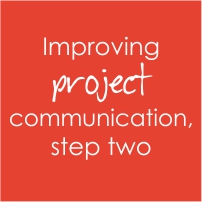 Our lives are littered with lines like the following:
Our lives are littered with lines like the following:
- “Don’t talk to me, talk to my lawyer!”
- “I know I need a raise / holiday / more recognition, but it’s no use telling me, tell that to my boss!”
- “That’s a great idea, but rather tell it to the government!”
These statements all testify to the fact that we often direct our comments, suggestions, ideas and updates to the wrong individuals, rendering the information useless.
In our previous article on project communication (Improving project communication, step one!) we explored the importance of conveying the right amount of information when communicating with your project team and stakeholders. In this article, we look at the importance of getting the right information to the right people.
Communication fix 2: Communicate to the right people
Different stakeholders are interested in different aspects of your project. There is no use in going into the finer detail of the project scope with a sponsor who may only be interested in the bottom line – is the project on track or not? Similarly, a team member may need detailed information on the next steps required from them, whilst the overall health of the project may be less relevant.
So the question remains: What should I be communicating to whom? Generally speaking, the following guidelines can be applied.
Team members need to know what they should be working on, the deadlines for each piece of work and what dependencies exist between their work and that of others. High-level information, such as whether the project will be delivered on time and on budget, is not necessarily relevant to team members on a daily basis.
Project sponsors, on the other hand, are all about the bottom line. They need to know the overall status of the project, whether it’s going to finish in time, if the scope is going to change and whether more money will be required. Sponsors don’t need to know about every single delivery issue, so including this information in your updates to them will most probably frustrate them rather than add value.
Project owners will be the ones inheriting the outputs of your project and will therefore be most interested in any changes to the final result and the delivery date.
A Project Portfolio Management tool like Project Portfolio Office (PPO) will allow for different views and reports based on the user’s role. With PPO, various reports can also be automated, sending each stakeholder the specific information required for their role in an applicable report. By keeping the audience of your updates in mind, you will definitely get better feedback on your updates and minimise frustration all around. Keep a look out for the last article in this series, Improving project communication, step three.
Are you looking for a project and portfolio management tool to improve your communication? Try a free 30-day trial of PPO today at www.go2ppo.com/try.php.
PPO is an award winning online project portfolio management and collaboration application. PPO is simple, immediate, secure and affordable. PPO is flexible and can be configured to support any methodology.


